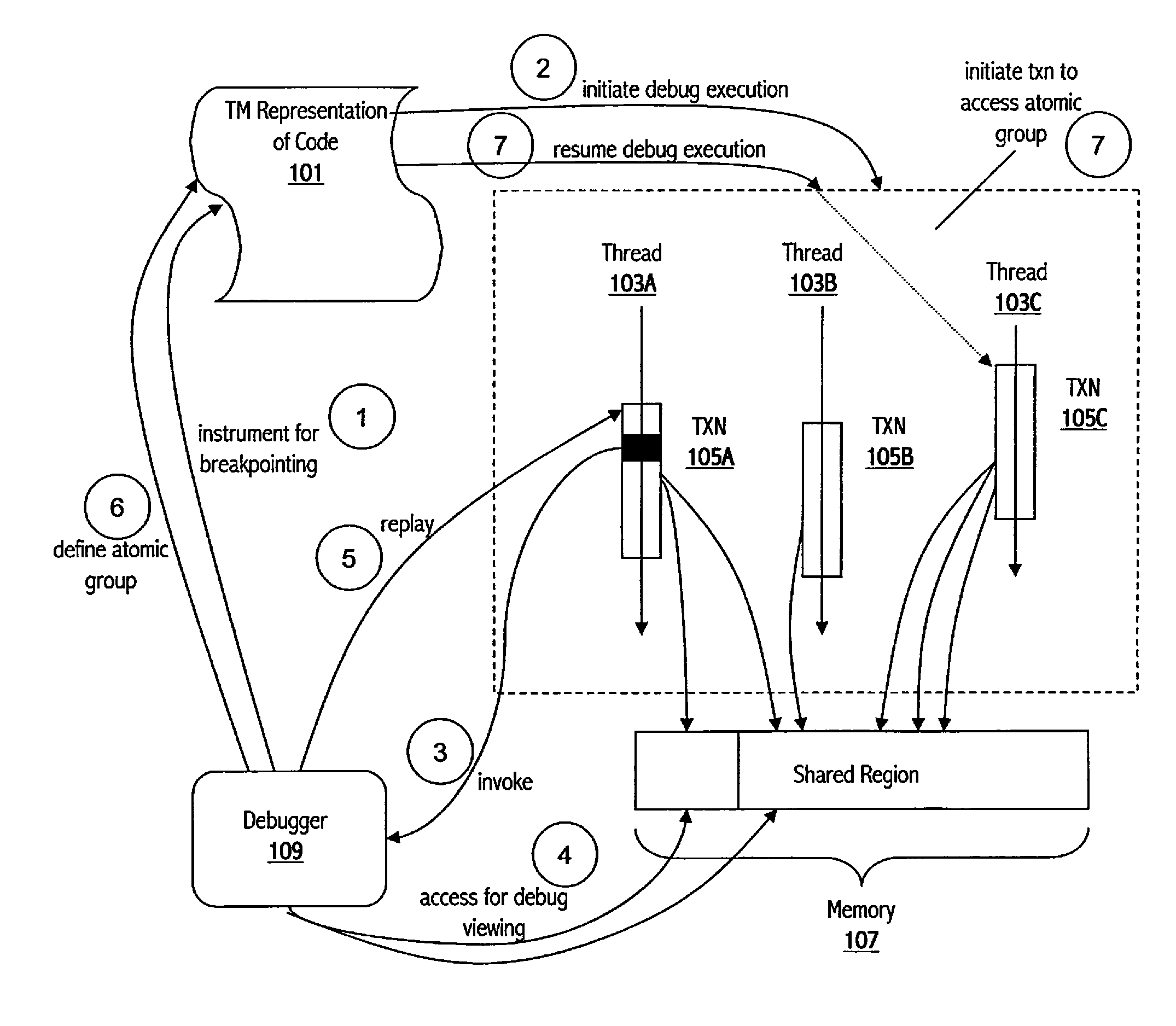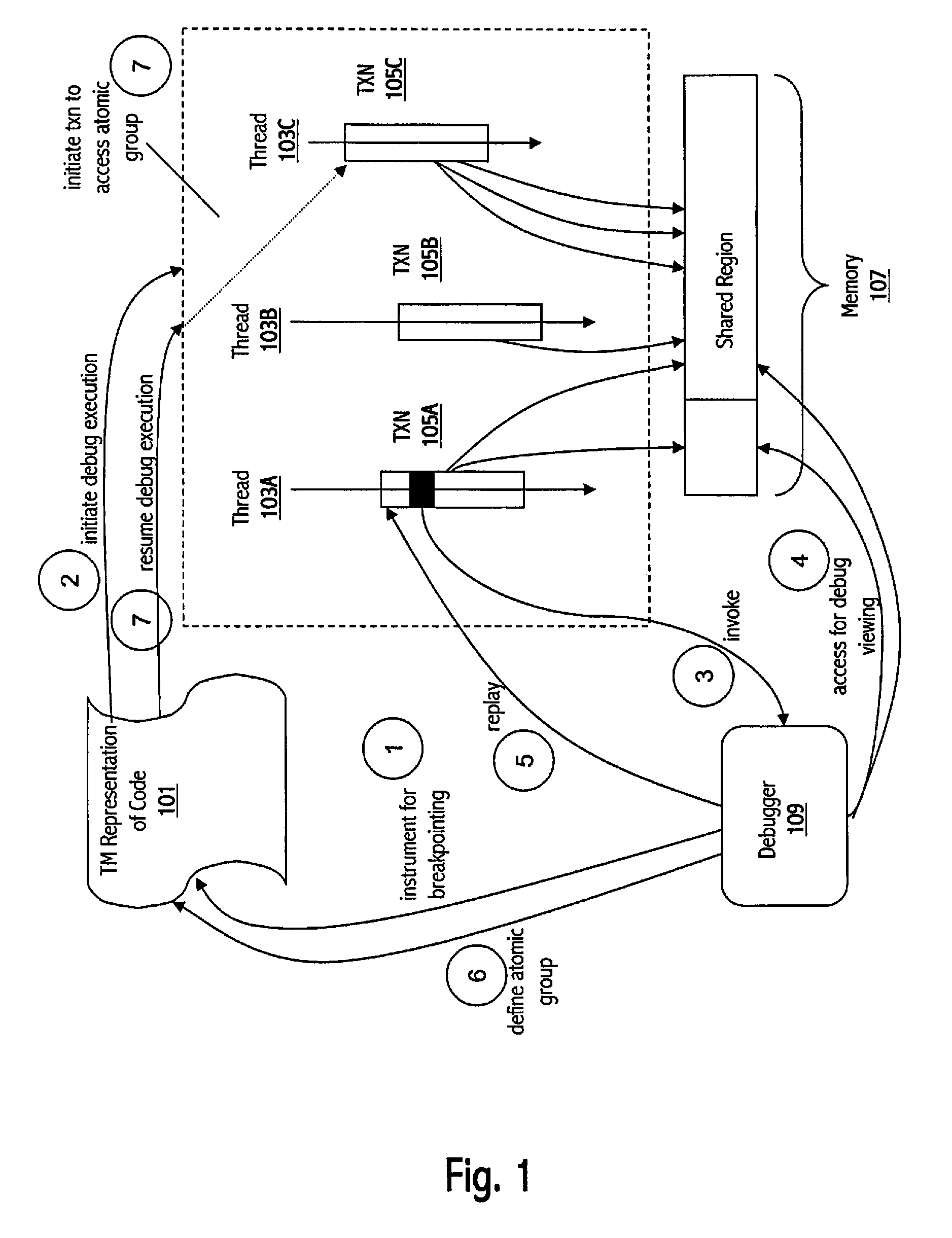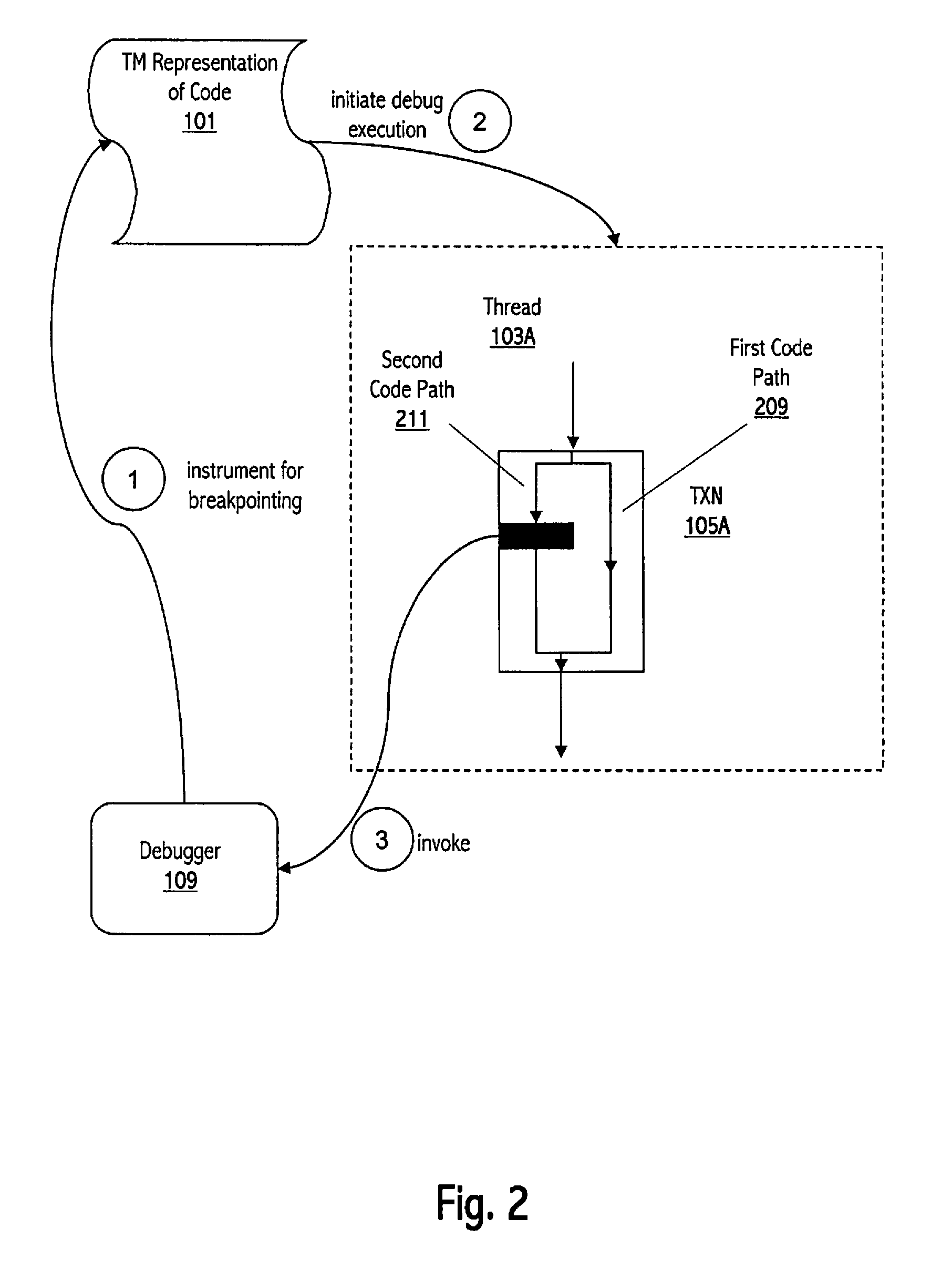Delayed breakpoints
a breakpoint and delay technology, applied in the field of delay breakpoints, can solve the problems of affecting the performance of the program, and reducing the number of breakpoints, so as to reduce the side effects of breakpoints and delay breakpoints
- Summary
- Abstract
- Description
- Claims
- Application Information
AI Technical Summary
Benefits of technology
Problems solved by technology
Method used
Image
Examples
Embodiment Construction
)
[0021]The description that follows includes exemplary systems, methods, techniques, instruction sequences and computer program products that embody techniques of the present invention. However, it is understood that the described invention may be practiced without these specific details. For instance, the examples assume a transactional memory implementation that utilizes an ownership record for multiple transactional locations, even though an implementation may employ an ownership record for each transactional location. In other instances, well-known instruction instances, protocols, structures and techniques have not been shown in detail in order not to obfuscate the description.
Overview of Transactional Memory
[0022]A HyTM system comprises a compiler, a library for supporting transactions in software, and (optionally) HTM support. Programmers express blocks of code that should (appear to) be executed atomically in some language-specific notation. The embodiments do not depend on ...
PUM
 Login to View More
Login to View More Abstract
Description
Claims
Application Information
 Login to View More
Login to View More - R&D
- Intellectual Property
- Life Sciences
- Materials
- Tech Scout
- Unparalleled Data Quality
- Higher Quality Content
- 60% Fewer Hallucinations
Browse by: Latest US Patents, China's latest patents, Technical Efficacy Thesaurus, Application Domain, Technology Topic, Popular Technical Reports.
© 2025 PatSnap. All rights reserved.Legal|Privacy policy|Modern Slavery Act Transparency Statement|Sitemap|About US| Contact US: help@patsnap.com



